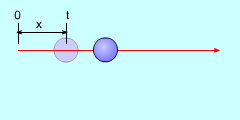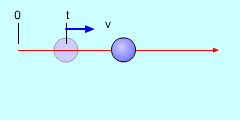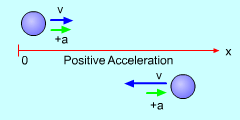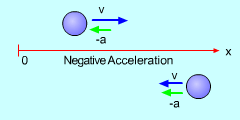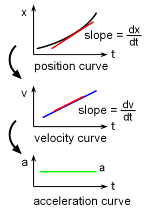| Ch 1. Particle General Motion | Multimedia Engineering Dynamics | ||||||
|
Position, Vel & Accel. |
Accel. vary w/ Time |
Accel. Constant | Rect. Coordinates | Norm/Tang. Coordinates | Polar Coordinates |
Relative Motion |
|
| Position, Velocity, Acceleration | Case Intro | Theory | Case Solution | Example |
| Chapter |
| - Particle - |
| 1. General Motion |
| 2. Force & Accel. |
| 3. Energy |
| 4. Momentum |
| - Rigid Body - |
| 5. General Motion |
| 6. Force & Accel. |
| 7. Energy |
| 8. Momentum |
| 9. 3-D Motion |
| 10. Vibrations |
| Appendix |
| Basic Math |
| Units |
| Basic Dynamics Eqs |
| Sections |
| eBooks |
| Dynamics |
| Fluids |
| Math |
| Mechanics |
| Statics |
| Thermodynamics |
| ©Kurt Gramoll |
|
|
|||||
| Velocity |
|||||
|
|
A particle moving in a straight line is generally called rectilinear motion. The displacement, Δx, measures the change in position from a fixed origin O along the straight line. In this discussion, distance is represented by 'x', but could also be 'y', 'z' or even 's' (generic symbol for distance). The average velocity of the particle is defined as the quotient of the displacement Δx and the time interval Δt over which the displacement takes place. Average Velocity = Δx/Δt |
||||
|
|
Acceleration |
||||
The average acceleration is defined as the quotient of the change in velocity Δv and the time interval Δt over which the change in velocity takes place. Average Acceleration = Δv/Δt The instantaneous acceleration at time t is defined as the limit as Δt approaches 0 of the average acceleration. For a positive acceleration, either
For a negative acceleration, either
|
|||||
| Graphic Analysis |
|||||
|
|
If the displacement, velocity, and acceleration are graphed vs. time then
|
||||
Practice Homework and Test problems now available in the 'Eng Dynamics' mobile app
Includes over 400 free problems with complete detailed solutions.
Available at the Google Play Store and Apple App Store.
